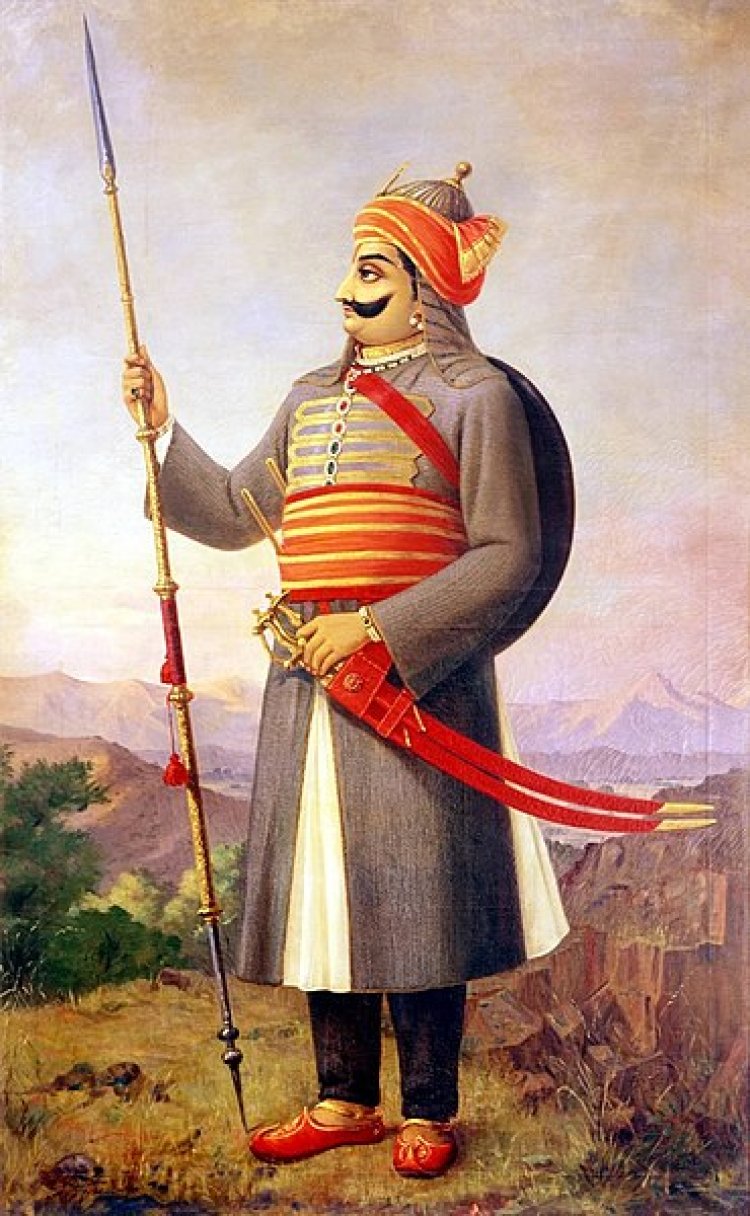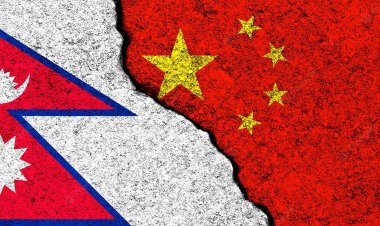Maharana Pratap Singh: The Defiant Rajput Warrior King
Unleash the courage of Maharana Pratap Singh, the fearless Rajput warrior who defied the mighty Mughal Empire with unwavering valor and indomitable spirit.

In the annals of Indian history, there are certain figures whose bravery and valor continue to inspire generations. One such luminary is Maharana Pratap Singh, the legendary ruler of Mewar in present-day Rajasthan. Maharana Pratap's unwavering courage, indomitable spirit, and relentless resistance against the Mughal Empire have etched his name in the collective memory of the nation.
Maharana Pratap, also known as Rana Pratap Singh, was a valiant and revered Rajput warrior who ruled the kingdom of Mewar in present-day Rajasthan, India. He is celebrated for his unwavering courage, indomitable spirit, and relentless resistance against the Mughal Empire during the 16th century. Here are some key details about Maharana Pratap and his significant contributions.
In this article, we will discover the inspiring tale of Maharana Pratap, the legendary Rajput warrior who fearlessly defended his kingdom against the mighty Mughal Empire. From his early life to his ascension as the king of Mewar and his relentless resistance against Emperor Akbar, Maharana Pratap's story is one of courage, honor, and unwavering patriotism.
Birth and Lineage:
Maharana Pratap was born on May 9, 1540, in Kumbhalgarh, Mewar, a fort in the Aravalli Hills which was a prominent Rajput kingdom. He belonged to the Sisodia Rajput clan, which traced its lineage back to the legendary King Rana Hamir. His father, Maharana Udai Singh II, was the ruler of Mewar at the time. As a child, Pratap was trained in martial arts, horse riding, and warfare, receiving an education befitting a future king. He imbibed a strong sense of honor, duty, and love for his motherland from his early years.
Early Life and Ascension:
The ascension of Maharana Pratap to the throne was not a smooth process. According to historical accounts, when his father passed away, the nobles of Mewar chose his eldest son, Jagmal, as the next ruler due to his seniority. This decision was met with strong opposition from Pratap and his loyal supporters. Despite the challenges, Pratap's determination and support from his followers eventually led to his coronation as the king of Mewar in 1572. His ascension came at a challenging time when the Mughal Emperor Akbar sought to expand his empire and exert control over the Rajput kingdoms.
Battles and Resistance:
Maharana Pratap, was known for his valiant battles and resistance against the Mughal emperor Akbar during the 16th century. The conflict between Maharana Pratap and Akbar was a significant chapter in Indian history, marked by numerous battles and acts of resistance. Here are some notable events:
-
Battle of Haldighati (1576):
The Battle of Haldighati is one of the most famous encounters between Maharana Pratap and Akbar's forces. Though Maharana Pratap's forces were outnumbered and outmatched by the Mughal army led by Man Singh I, the Rajputs put up a fierce fight. Despite facing heavy losses, Maharana Pratap managed to escape the battlefield and continued his resistance against Akbar. -
Siege of Chittorgarh (1567-1568):
Chittorgarh was the capital of Mewar, ruled by Maharana Pratap. In an attempt to capture the strategic fort, Akbar ordered a siege on Chittorgarh. Maharana Pratap defended the fort for several months, but eventually, due to scarcity of resources and continuous attacks, he had to abandon Chittorgarh and move to the Aravalli hills. -
Guerrilla Warfare:
After losing Chittorgarh, Maharana Pratap adopted guerrilla warfare tactics to resist the Mughal forces. He utilized the rugged terrain of the Aravalli hills to his advantage and launched surprise attacks on Akbar's troops. This strategy allowed him to keep the Mughals at bay and maintain his resistance for an extended period. -
Battle of Dewair (1582):
The Battle of Dewair was a significant victory for Maharana Pratap. In this battle, he successfully defeated the Mughal army led by Asaf Khan and recovered much of his lost territory, including important forts like Gogunda and Kumbhalgarh.
Continuous Resistance:
Even after facing setbacks and territorial losses, Maharana Pratap never submitted to Akbar's rule. He continued his resistance and waged a prolonged struggle to protect the independence of Mewar. Despite diplomatic efforts from Akbar's side to negotiate peace, Maharana Pratap refused to surrender.
Legacy and Folklore:
The legacy of Maharana Pratap, the valiant Rajput warrior king, is deeply ingrained in the folklore and history of India. His courageous acts of resistance against the mighty Mughal empire have made him a revered figure and a symbol of Rajput pride. Here are some aspects of Maharana Pratap's legacy and the folklore surrounding him:
-
Valor and Honor:
Maharana Pratap is celebrated for his unwavering commitment to honor and valor. His refusal to submit to Akbar and his relentless pursuit of independence for Mewar has made him an embodiment of courage and sacrifice. He is often depicted as a noble and chivalrous warrior who prioritized his principles and the dignity of his people above personal gain. -
Chetak, the Loyal Steed:
One of the most famous tales associated with Maharana Pratap is the story of his loyal horse, Chetak. During the Battle of Haldighati, Chetak played a crucial role in saving Maharana Pratap's life by carrying him to safety despite being severely wounded. The bravery and devotion of Chetak have become legendary, and the story of their bond has been passed down through generations. -
The Battle at Haldighati:
The Battle of Haldighati is a pivotal event in the folklore surrounding Maharana Pratap. It is often depicted as a battle between good and evil, where Maharana Pratap fought against overwhelming odds to defend his kingdom and uphold Rajput's honor. The story of his valiant stand at Haldighati has become an emblem of bravery and resilience in the face of adversity. -
Songs and Ballads:
The folk traditions of Rajasthan are replete with songs and ballads that recount the tales of Maharana Pratap's heroism. These songs, known as "bhajans" or "kirtans," celebrate his battles, sacrifices, and unwavering spirit. They are sung during festivals, cultural events, and even in daily life, keeping alive the memory of Maharana Pratap and inspiring the Rajput community. -
Statues and Monuments:
Maharana Pratap is honored through statues and monuments erected in his memory. The most notable is the iconic Maharana Pratap Memorial in Udaipur, Rajasthan, which stands as a tribute to his courage and resilience. These structures serve as reminders of his legacy and attract visitors who seek to pay their respects and learn about his remarkable life.
Inspiration and Symbol of Resistance: Maharana Pratap's legacy transcends time and continues to inspire people. His unwavering resistance against oppression and his refusal to compromise on his principles have made him a symbol of defiance and the spirit of independence. His story serves as a reminder of the importance of preserving one's identity, heritage, and values in the face of adversity.
The folklore surrounding Maharana Pratap has kept his memory alive for centuries, ensuring that his heroic deeds and the ideals he stood for are passed down to future generations. His legacy as a warrior king, his steadfastness in the face of challenges, and his commitment to honor continue to resonate with people, earning him a special place in the hearts and minds of the Indian people.
Death and Succession:
Maharana Pratap passed away on January 29, 1597, in Chavand, Mewar leaving behind a legacy of bravery and patriotism. He is remembered as one of the greatest Rajput warriors, who chose honor over surrender and fought for the freedom of his kingdom till his last breath. His story continues to inspire people with his unwavering commitment to his principles and his relentless pursuit of independence. His son, Amar Singh, succeeded him as the ruler of Mewar, continuing the legacy of resistance against the Mughals. Maharana Pratap's unwavering commitment to defending his kingdom and his refusal to bow down to foreign rule has made him an iconic figure in Indian history.
What's Your Reaction?








































































































